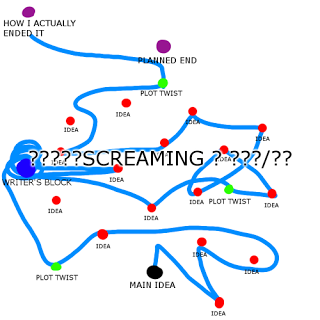Build Your Plot Framework
 Last week we laid the groundwork for building the plot for a novel. My approach to plotting can differ, depending on the genre I’m working on.
Last week we laid the groundwork for building the plot for a novel. My approach to plotting can differ, depending on the genre I’m working on.My thriller plots usually start with the villain’s project. What’s the bad guy trying to do? Whatever it is, that’s what my heroes have to stop from happening. My mystery plots usually start with the big challenge. What must Hannibal Jones do? I don’t generally start with “solve a murder.” because it’s just too simple. Police procedurals can start that way but Hannibal is a private investigator so he doesn’t get into cases that are obviously police business. I usually start with a “what if.” For example, the idea for Blood and Bone came from a news story i was working on at the time about bone marrow donation programs. What if someone needed a transplant and the only possible donor was missing? What Hannibal has to do is find the missing person.
That’s where it starts: Hannibal needs to find a missing person. And I know where it ends. Hannibal will find the missing person in time and save the day.
Now if you didn’t notice, I just gave you the outline of a story.
Hannibal is asked to find a missing person =è hannibal finds him and saves the day for that
One classic may have started with this outline:
Odysseus needs to get home ===> Odysseus gets home.
For a popular fairy tale, the outline might be:
Hansel and Gretel get lost=è Hansel and Gretel get home.
This is the basic outline and from here we just add more and more detail until we’re ready to write. Notice that the basic story starts when the normal state of things is disturbed, and ends when the normal state is restored.
Beyond that, the basic structure I use for my books will work for just about any kind of genre fiction. Here’s the simplest diagram of what’s in my head:
Now what? We’re doomed! Problem presented==è much bigger problem appears --à high speed finish=è hero saves the day.
That first section is about a quarter of the book. It only looks like our hero has a big problem until the second part starts, at the point I call “Now what?” This is the spot at which our protagonist is temporarily at a loss for what to do next. This second section is around half the book. At the end of it is what I call the “we’re doomed!” point, when all appears lost. Then the hero figures out the solution and it’s a race to the finish.
Of course there’s a lot more to it. I’ll fill in some of those details next week.
Published on January 23, 2016 11:20
No comments have been added yet.



